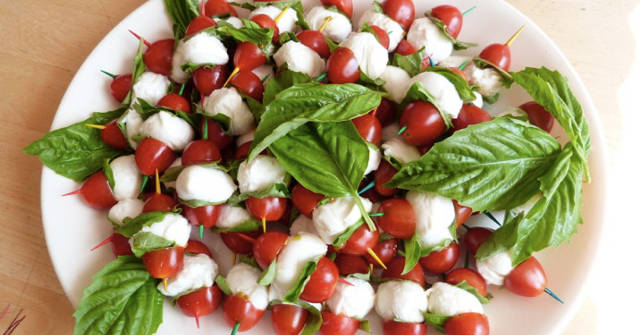
Tomatoes
This page is an open source resource guide for tomatoes. It is for growing and maintaining the most bio-diverse, delicious, and broadly applicable tomato selection possible. It contains cultural considerations, planting guidelines, descriptions, and the best places we’ve found for purchasing the species we’ve listed. As part of the One Community Highest Good food component of global transformation, this page will continue to evolve indefinitely to contain maintenance and care tips, accessioning and plant breeding and sharing information as part of the One Community open source botanical garden model, and even recipe’s, preparations, and preservation methods used on the property.
SUGGESTIONS | CONSULTING | MEMBERSHIP | OTHER OPTIONS
Click these links to be taken directly to the relevant sections on this page:
- Tomato Overview
- Cultural Considerations
- Planting Guidelines
- Specific Varieties
- Plant Material/Seed Providers
- Other Tomato Resources
- Tomatoes as Part of the Botanical Garden Model
- Tomato Preparation, Preservation, and Recipes
- Links to Other Edible Plant Pages
PAGES RELATED TO THIS PAGE (click icons for complete pages)
CLICK THESE ICONS TO JOIN US THROUGH SOCIAL MEDIA
TOMATOES
(Click here for tomato purchase details)
Tomatoes (Solanum lycopersicum- formerly Lycopersicon esculentum)
CULTURAL CONSIDERATIONS
- Excess nitrogen causes reduced fruit crop
- Tomatoes like warm temperatures and rich soil
- Plants like steady moisture, mulch is very beneficial
- Tomatoes are subject to several insect pests and diseases
- If planted too early plants will not grow until weather warms
PLANTING GUIDELINES
Tomatoes are generally planted as transplants, which are started indoors in late winter or early spring. Soil should be amended in advance with compost or well rotted animal manure. In areas with nematode populations, inoculating the soil with beneficial nematodes may be advisable. Transplant out in full sun after last frost and when soil temperatures have warmed sufficiently. The sprawling forms are usually staked to keep the fruit off the ground. The most frequent pest is the tomato hornworm and these can be hand picked, but should not be entirely destroyed as the adult moth is an important pollinator. They can be moved to other solanaceous species to live out their life cycle – ground cherries (Physalis spp.) are a good trap crop.
VIDEO COMING: Planting tutorial followed by timelapse growth videos
SEE OUR HOW TO HELP AND/OR CROWDFUNDING CAMPAIGN PAGE IF YOU’D LIKE TO GET INVOLVED AND/OR SUPPORT ONE COMMUNITY’S DEVELOPMENT PROCESS.
ADDITIONAL INFORMATION
|
We will also be growing the following additional tomatoes:
Tomatoes (Solanum lycopersicum:: GT#11 -GT#25
11. Amarillo de Benlloch 12. Aranyalma 13. Blue Streak 14. Burracker’s Favorite 15. Gajo de Melon 16. Joya de Oaxaca 17. Babushkin’s Secret 18. Beefsteak, Watermelon 19. Mexican Giant 20. Market at Huachinango Puebla Mexico 21. Purple Calabash 22. Zapotec Pleated 23. Abe Lincoln 24. Bison 25. Burbank
Tomato Plant Material/Seed Providers:
- SSE = Seed Savers Exchange http://www.seedsavers.org
Tomato Purchase Details
| REF # | VEGETABLES | VARIETY | SOURCE | QUANTITY | UNIT COST | TOTAL COST |
| GT#1 | Tomato | Amish Paste | SSE | 3 pkt. | $3 | $9 |
| GT#2 | Tomato | Black Krim | SSE | 1/2 oz. | $27.5 | $27.5 |
| GT#3 | Tomato | Currant, Sweet Pea | SSE | 3 pkt. | $3 | $9 |
| GT#4 | Tomato | Gold Medal | SSE | 3 pkt. | $3 | $9 |
| GT#5 | Tomato | Mortgage Lifter, Halladay’s | SSE | 3 pkt. | $3 | $9 |
| GT#6 | Tomato | Principe Borghese | SSE | 3 pkt. | $3 | $9 |
| GT#7 | Tomato | Redfield Beauty | SSE | 3 pkt. | $3 | $9 |
| GT#8 | Tomato | Dester | SSE | 3 pkt. | $3 | $9 |
| GT#9 | Tomato | Dr. Wyche’s Yellow | SSE | 3 pkt. | $3 | $9 |
| GT#10 | Tomato | Cherokee Purple | SSE | 3 pkt. | $3 | $9 |
| GT#11 | Tomato | Amarillo de Benlloch | SSE | 3 pkt. | $3 | $9 |
| GT#12 | Tomato | Aranyalma | SSE | 3 pkt. | $3 | $9 |
| GT#13 | Tomato | Blue Streak | SSE | 3 pkt. | $3 | $9 |
| GT#14 | Tomato | Burracker’s Favorite | SSE | 3 pkt. | $3 | $9 |
| GT#15 | Tomato | Gajo de Melon | SSE | 3 pkt. | $3 | $9 |
| GT#16 | Tomato | Joya de Oaxaca | SSE | 3 pkt. | $3 | $9 |
| GT#17 | Tomato | Babushkin’s Secret | SSE | 3 pkt. | $3 | $9 |
| GT#18 | Tomato | Beefsteak, Watermelon | SSE | 3 pkt. | $3 | $9 |
| GT#19 | Tomato | Mexican Giant | SSE | 3 pkt. | $3 | $9 |
| GT#20 | Tomato | Market at H. P. Mexico | SSE | 3 pkt. | $3 | $9 |
| GT#21 | Tomato | Purple Calabash | SSE | 3 pkt. | $3 | $9 |
| GT#22 | Tomato | Zapotec Pleated | SSE | 3 pkt. | $3 | $9 |
| GT#23 | Tomato | Abe Lincoln | SSE | 3 pkt. | $3 | $9 |
| GT#24 | Tomato | Bison | SSE | 3 pkt. | $3 | $9 |
| GT#25 | Tomato | Burbank | SSE | 3 pkt. | $3 | $9 |
OTHER TOMATO RESOURCES
We are seeking awesome tomato resources. If you know of one, please click here to share it with us so we can make this page better.
- What is New and Beneficial About Tomatoes
- How to Use Fresh Tomatoes
- Tomatoes: A Growing Guide
- Tomato Soup: Benefits and Uses
- How to Dice Tomatoes
- Tomato History and Varieties
- Tomato Basics: Diseases and Types
- 100 Ways to Use a Tomato
- 32 Amazing Benefits of Tomatoes for Skin, Hair and Health
- Tomato Powder: How to Make and Use
TOMATOES AS PART OF THE BOTANICAL GARDEN MODEL
This section will evolve to include accessioning and plant breeding and sharing information as part of the One Community open source botanical garden model.
TOMATO PREPARATION, PRESERVATION, AND RECIPES
This section will evolve to include testimonials, recipe’s, preparations, and preservation methods used on the property first, and then later with additional information from other Highest Good collaborators and teacher/demonstration hubs.
- Green Tomato Recipes
- Texas Toast Tomato Sandwiches
- Couscous Tabbouleh with Tomato and Cucumber
- Baked Eggs in Tomatoes
- No Mayo Easy Pasta Salad
- Tomato, Olive and Mozzarella Salad with Basil Vinaigrette
- Preserving and Storing Tomatoes
Garlic Grilled Tomatoes
Recipe courtesy of: Grilled Recipe Blogspot
| Total Time: 20 min Prep: 20 min Cook: 12 min | Yield: 4 Servings Level: Easy |
Ingredients
House Seasoning
| Directions
Serve immediately |
15-Minute Creamy Tomato Soup (Vegan)
Recipe courtesy of: Serious Eats
| Total Time: 30 min Prep: 15 min Cook: 15 min | Yield: 4 – 6 Servings Level: Easy |
Ingredients
| Directions
|
Caprese Salad Bites
Recipe courtesy of: Doctorate Housewife
| Total Time: 15 min Prep: 15 min Cook: Chill | Yield: 4 Servings Level: Easy |
Ingredients
| Directions
|
LINKS TO OTHER EDIBLE PLANT PAGES
WHO WE ARE
MAIN OPEN SOURCE HUBS
KEY FOOD COMPONENTS
- OS Hub
- Grow
- Build
- Ethical, Humane, & Conscientious Goat Stewardship
- Ethical, Humane, & Conscientious Rabbit Stewardship
- Ethical, Humane, & Conscientious Chicken Stewardship
- Food Forest
- Hoop Houses
- Apiary/Bee Yard
- Botanical Garden Creation & Inventorying
- Conscientious Wildlife Stewardship and Habitat Development
- Large-scale Gardening
- Soil Amendment & Site Preparation
 One Community
One Community
































































